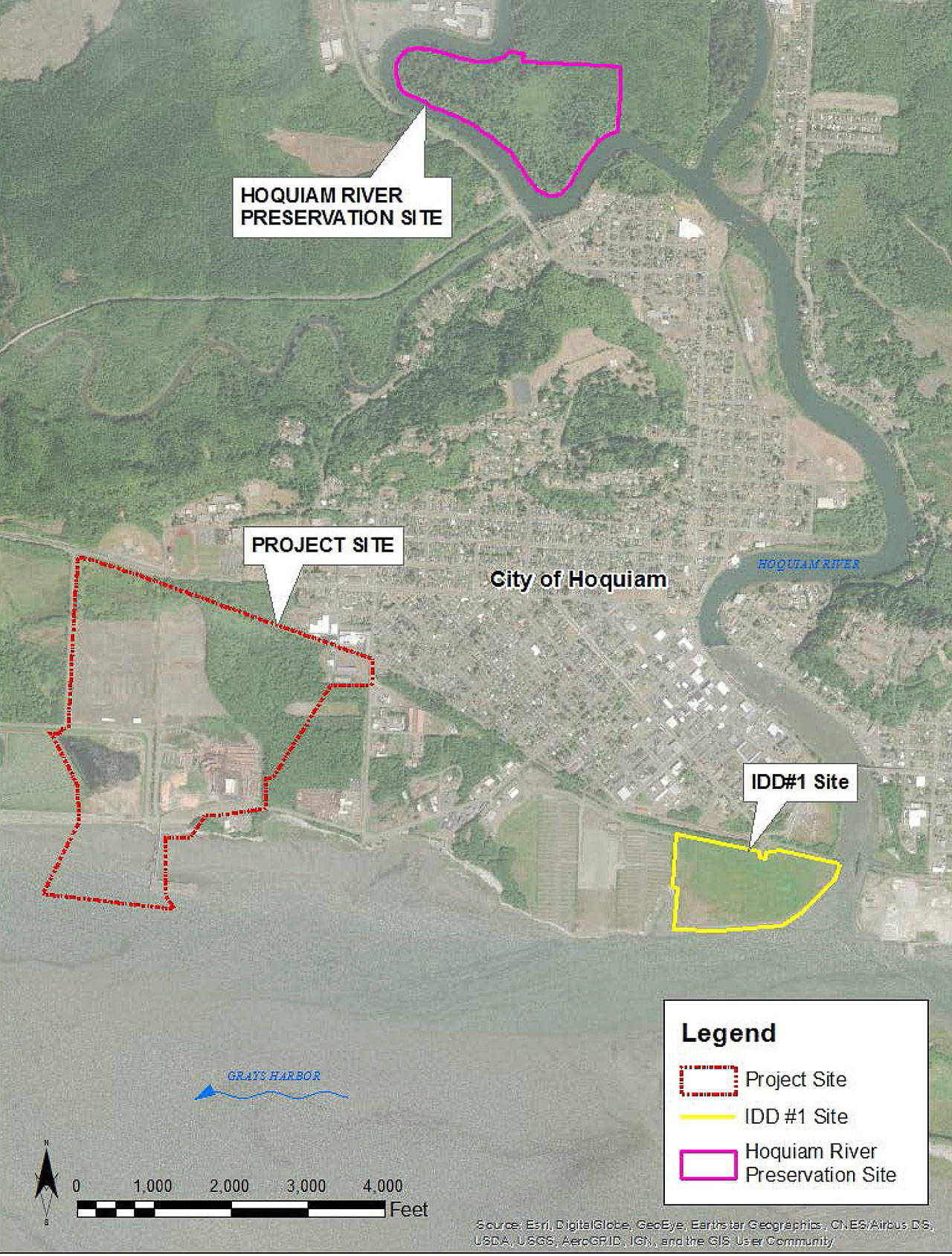BHP, one of the largest mining companies in the world, has submitted its updated land use and shoreline permit applications to the City of Hoquiam and a revised State Environmental Policy Act (SEPA) checklist for its proposed potash export terminal on Port of Grays Harbor property near Bowerman Airport.
A month-long public comment period on the project will begin after the city and its consulting firm make a determination on the application.
“A decision on the SEPA should happen around the beginning of September,” said Hoquiam City Administrator Brian Shay. “We are tentatively planning for a shoreline permit hearing in late October.”
The company, which is based in Australia, started the process several months ago, but essentially started over in order to address concerns raised.
The revised application is now available online and includes an executive summary that highlights some of the differences in BHP’s initial application and the one it has recently submitted. All of the application documents can be accessed at bhp.com/environment/regulatory-information/potash-export-facility-at-grays-harbor/digital-information-room.
BHP’s initial application with the city, submitted in late September 2018, was given a “determination of non-significance” Nov. 15, meaning it was determined by the city and a consulting firm, Anchor Environmental, the project would not have a significant impact on the environment.
Written public comment was taken Nov. 15-Dec. 17, but after extensive community outreach with a variety of stakeholders, a public hearing scheduled for Dec. 19 was put on hold as BHP revised its application to address certain “concerns with the project” expressed by the community, “so they proactively wanted to try to address those concerns prior to the hearing,” said Shay earlier this year.
Some of the original concerns involved BHP’s initial plans for “mitigation projects,” improvements to wetlands outside the project footprint itself. BHP’s original proposal called for such mitigation projects to take place within the Terminal 3 footprint of the proposed potash facility, but comments from the city, Army Corps of Engineers, Department of Ecology, the Environmental Protection Agency, the Quinault Indian Nation and others prompted the change to focus mitigation efforts near, but outside, the project site.
There are three mitigation projects detailed and mapped in the executive summary. The first one is the “construction of a compensatory wetland and aquatic mitigation site” on the west side of the mouth of the Hoquiam River. That would include excavation of previously filled tide channels, “restoring a tidal hydrological regime to the site,” and “creating and rehabilitating wetlands into salt marsh and emergent wetland habitats,” according to the executive summary. There would also be improvements to an existing trail on the site “to provide authorized public access.”
The second mitigation project would remove more than 1,300 creosote-treated pilings and a “derelict overwater structure” located near Terminal 4; the third details preserving about 71.5 acres of “high-quality floodplain wetlands and forested buffer on the Hoquiam River, approximately two miles north of the mouth of the river.”
The 64-page summary details other environmental factors for construction and operation of the facility and includes an eight-page table at its conclusion, a summary of potential impacts and mitigation and prevention efforts to address those impacts.
Terminal 3 remains one of two options being considered by BHP for the facility, the other in Vancouver, B.C. Operations at the facility would not begin for four years after the BHP board approves the operation of the Jansen Mine in Saskatoon, Saskatchewan, Canada, where the potash will be mined.
Potash refers to minerals that contain potassium and nearly all of what is mined around the world is used for fertilizer.
If operations commence at Terminal 3, there would be four million tons of potash coming in to the facility every year, according to Ken Smith, BHP’s manager of corporate affairs for potash. That would mean four to five trains and one or two vessels a week coming to the facility. Over time, BHP would increase to eight million tons of potash a year, eight to 10 trains and three or four vessels a week, said Smith.


